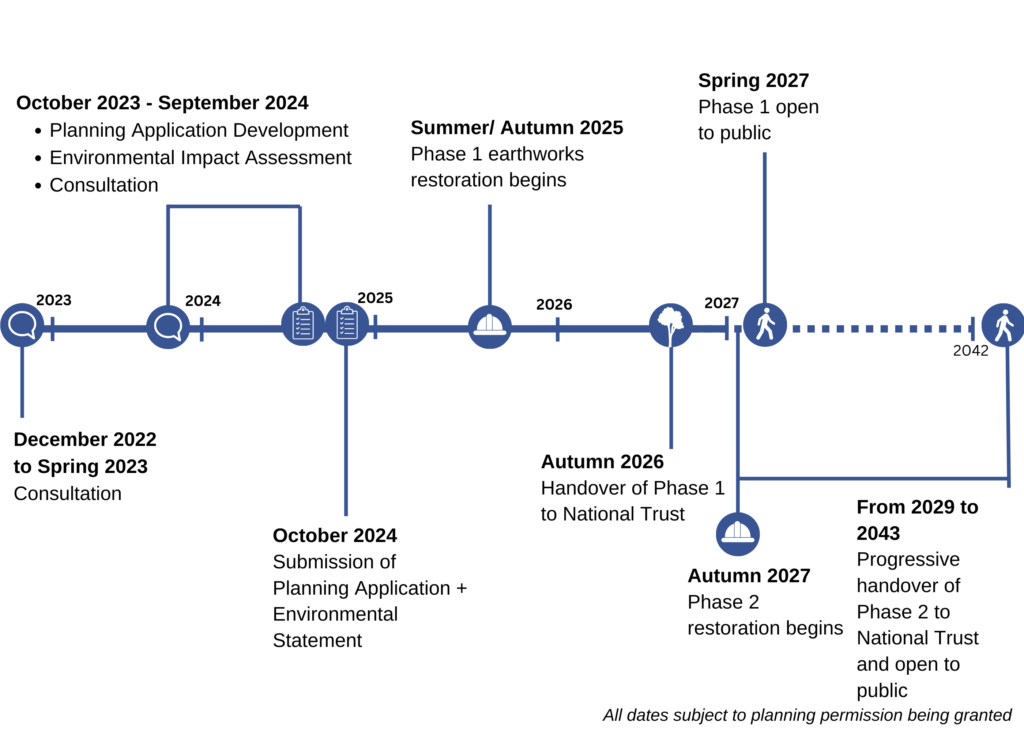The Project
Project Benefits
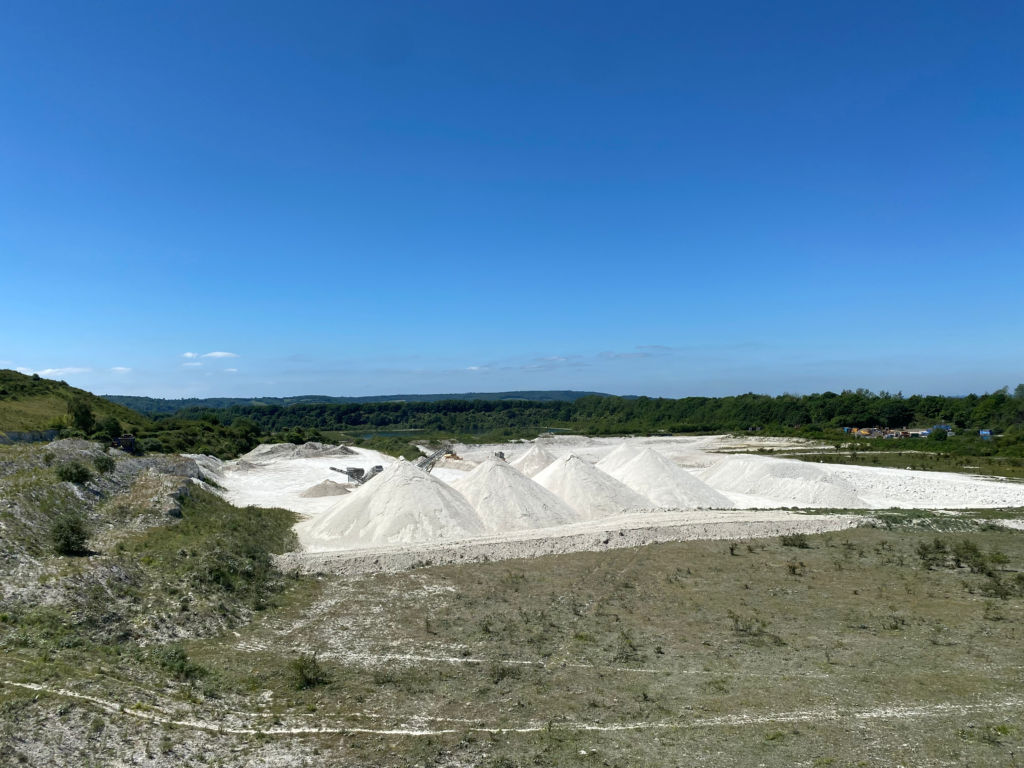
Transformation of quarry
Repair the harm caused by decades of quarrying, with a long-term vision to create a parkland for nature and recreation.
Restoring natural beauty
Re-integrate the quarry into natural chalkland rolling downlands, enhancing the Chiltern Hills Area of Outstanding Natural Beauty.

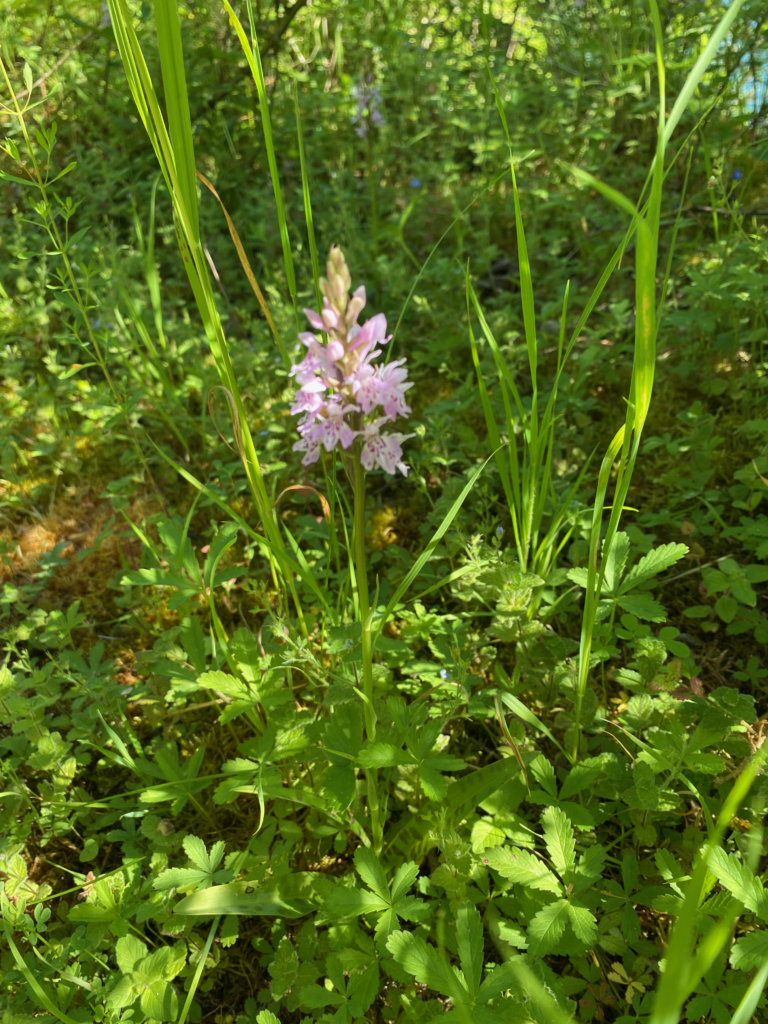
Enhancing biodiversity
Create new habitats including chalk grassland, the rarest habitat in the UK. There would also be native plants, scrub, woodland, and wetland. This would capture and store carbon helping mitigate climate change.
Recreational use
Form a new parkland creating a natural space, footpaths and open water swimming for the local communities and visitors enjoyment. The footpaths would connect into surrounding routes including The Ridgeway, Icknield Way and the National Trust Ashridge Estate.
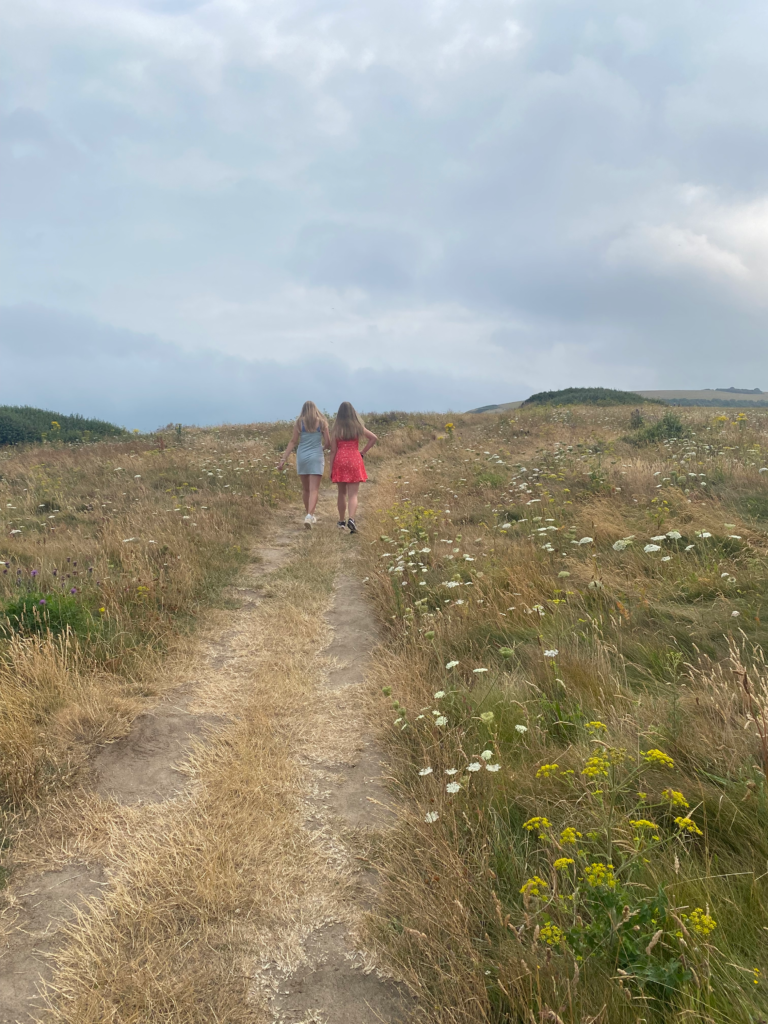
Integrates into wider natural landscape
Connects to local footpaths
Parking on site
Access for all
Project Phases
Pitstone Quarry would be restored in phases. Each phase would be handed over to the National Trust on completion. The total site would be 60 hectares, equivalent to 44 football pitches. Within 2 years of planning permission being granted, 33 hectares including the lake and wetlands, would be handed over to the National Trust to manage habitat development and recreational use. Phase 2 would be progressively restored over a 15-year period.
Phase 1 - Northern section of quarry and lake
Extends over 33 hectares, the equivalent of 25 football pitches. Phase 1 would deliver:
- Rolling chalk downland with combes reintegrating the unnatural steep quarry slopes with the surrounding Chiltern Hills.
- Over 3.6km (2.2 miles) of footpaths for visitors, including a circular route around the lake, accessible for all. This will only be accessible at weekends and bank holidays to keep visitors safely away from restoration activities in the southern section of the quarry.
- Rich and diverse habitats including chalk grassland and wild meadows
- Safe access for open water swimming areas.
- Viewpoints across the lake and downland.
- Car parking including disabled bays, bicycle racks, motorbike spaces and electric charging points.
Phase 1 restoration works would use only chalk extracted from the site.
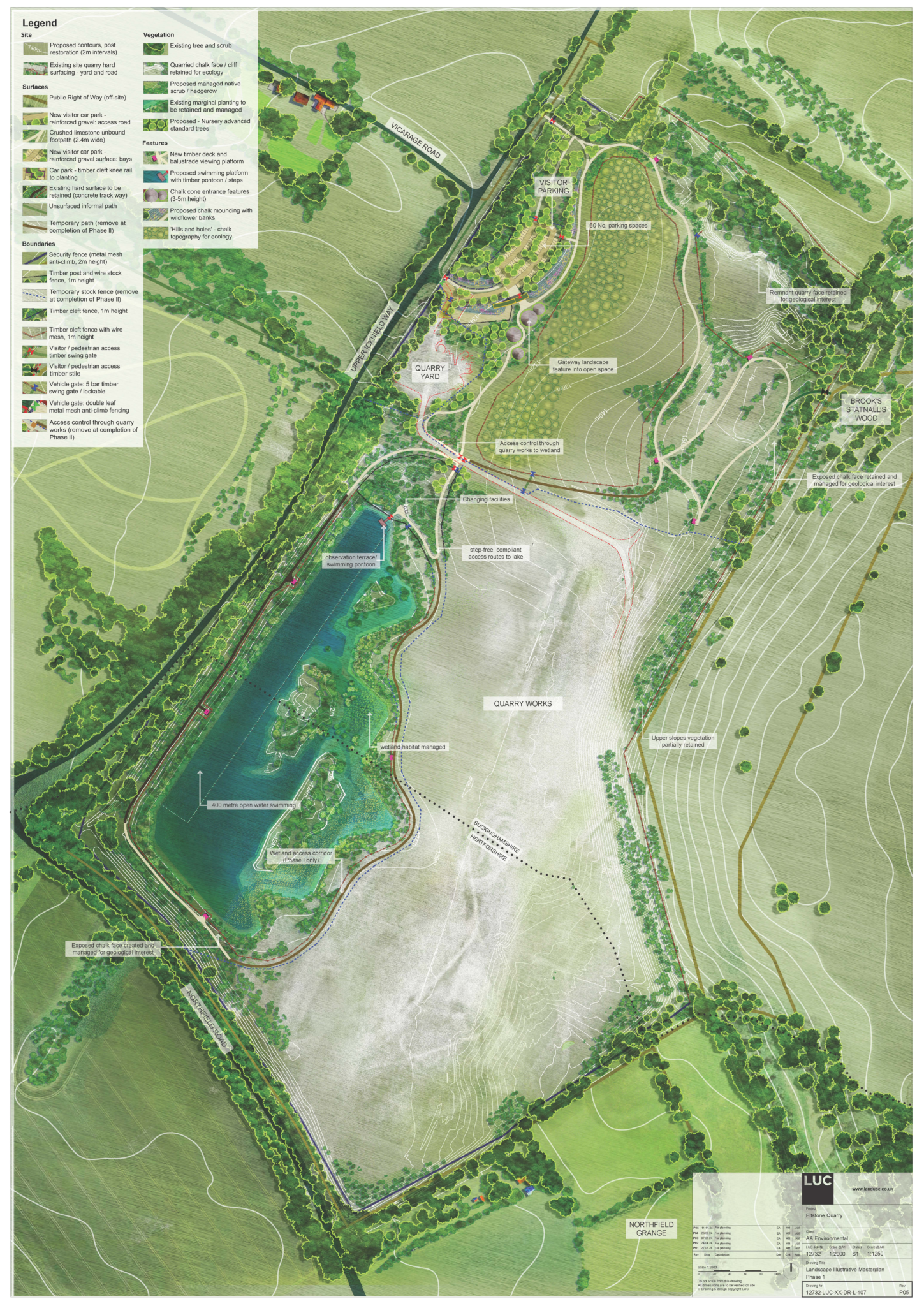
Phase 2 - Southern section of quarry
Extends over an additional 27 hectares (19 football pitches) in the south-east of the quarry. Phase 2 would provide:
- Biodiverse rolling chalk grassland habitat, falling from the higher land in the east and south to the lake and wetlands in the west.
- Additional footpaths totalling 5.4 km (3.6 miles) in length, reconnecting with existing trails around the site.
- A picnic area.
- Additional viewpoints.
The southern section of the quarry would be restored using inert material. It would be imported under an Environmental Permit, strictly controlled by the site team, and regulated by the Environment Agency. The imported materials would then be covered by a thick layer of chalk to provide the calcareous soils with which to recreate the rich habitats.
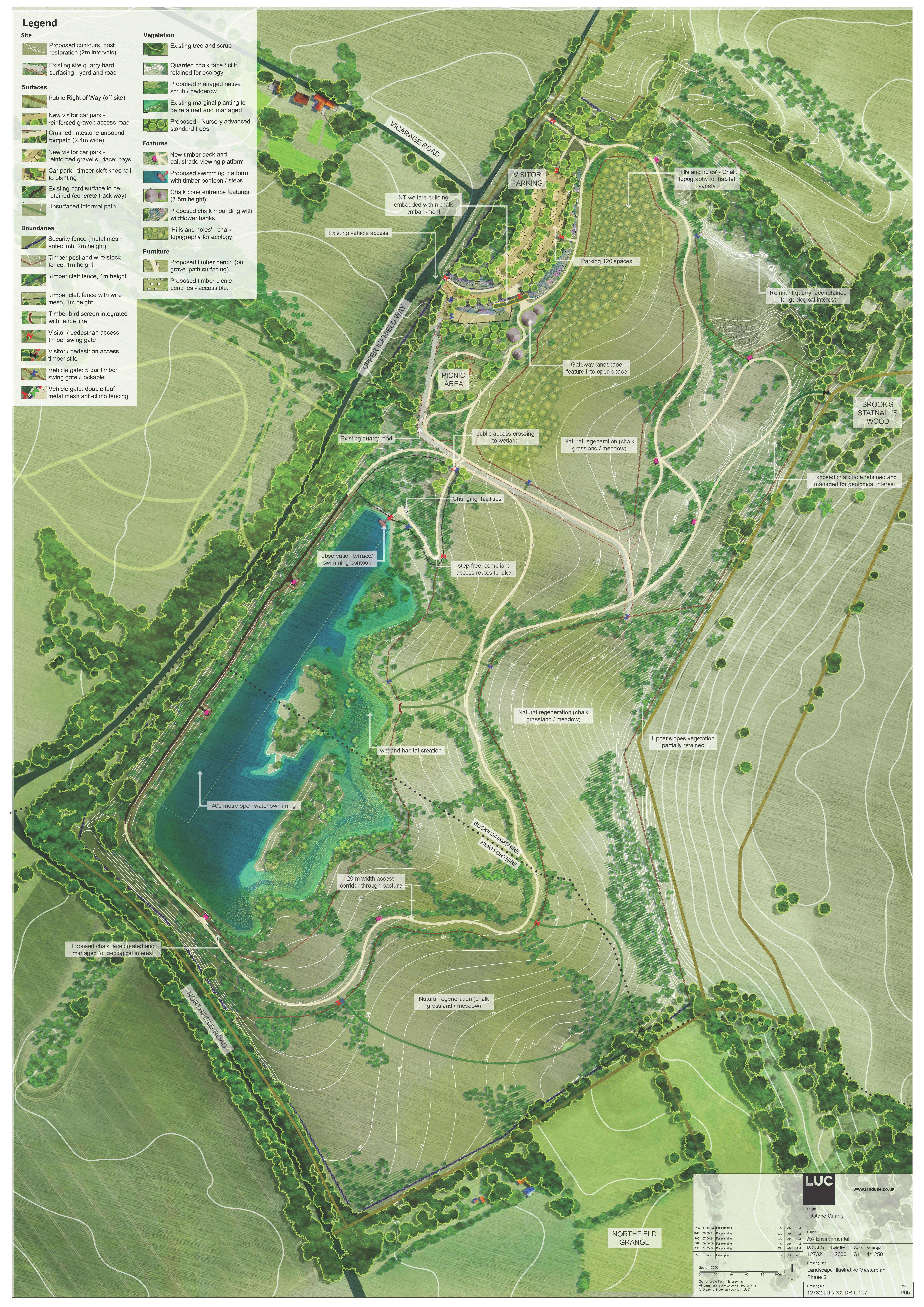
Project Timeline
